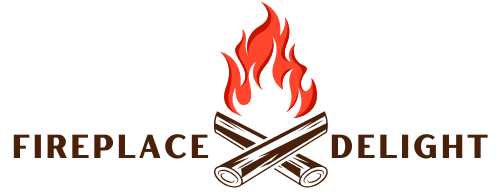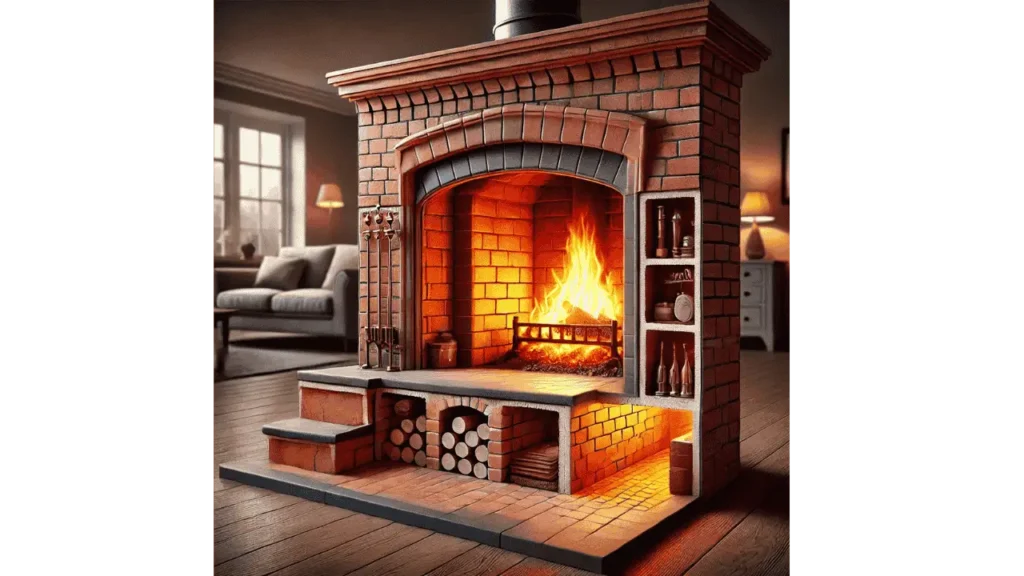A masonry fireplace is a traditional, built-in fireplace constructed from materials like brick, stone, or concrete. These fireplaces have been a staple in homes for centuries, providing warmth and a cozy ambiance. Unlike prefabricated fireplaces, masonry fireplaces are custom-built and designed to last for generations. Their timeless appeal, combined with advancements in heating efficiency, makes them a preferred choice for many homeowners looking to enhance their living space.
Introduction to Masonry Fireplaces
A masonry fireplace is more than just a heating source; it’s an architectural feature that adds charm and functionality to a home. Constructed with durable materials, these fireplaces are designed to withstand extreme temperatures and heavy use. They provide a natural, inviting atmosphere that’s hard to replicate with modern alternatives. Whether used as a primary heating source or a decorative focal point, masonry fireplaces continue to be a beloved element in homes worldwide.
Blending Tradition with Modernity
Masonry fireplaces bridge the gap between historic craftsmanship and modern home design. While the traditional look remains popular, contemporary styles have introduced sleeker designs and more efficient burning technologies. This balance allows homeowners to enjoy the charm of a classic fireplace while benefiting from advancements in efficiency and safety.
Historical and Modern Relevance
Historically, masonry fireplaces were the primary source of heating in homes. Today, they are often used for aesthetic and supplemental heating purposes. While central heating systems have reduced the need for fireplaces as primary heat sources, many homeowners still appreciate their architectural beauty and the cozy atmosphere they provide.
Structure and Design of Masonry Fireplaces
Masonry fireplaces are defined by their solid construction and use of durable materials. Their design can range from rustic and traditional to sleek and modern, allowing them to fit into various home styles. Understanding their structural components helps homeowners maintain their fireplaces properly.
Key Components and Material Choices
A masonry fireplace consists of several essential components, including the firebox, chimney, damper, and hearth. These elements work together to contain the fire, direct smoke safely outside, and improve heating efficiency. The choice of materials, such as firebrick and mortar, plays a crucial role in the fireplace’s durability and safety.
Materials Used in Construction
Common materials used in masonry fireplace construction include brick, stone, and concrete. Brick is a classic choice due to its heat resistance and long-lasting durability. Stone fireplaces, on the other hand, offer a more natural and rustic appearance. Concrete provides a modern and customizable option, making it a versatile choice for contemporary homes.
From Traditional to Modern Designs
Masonry fireplaces have evolved from the grand, traditional hearths of old to more refined, space-saving designs. Some homeowners opt for large, elaborate fireplaces as statement pieces, while others prefer minimalist, streamlined structures that complement modern interiors. Regardless of the design, masonry fireplaces add a timeless touch to any home.
Variety and Versatility
Masonry fireplaces are incredibly versatile, fitting into different architectural styles and personal preferences. Whether integrated into a rustic cabin, a contemporary loft, or a traditional family home, they enhance the aesthetic appeal of any space. Their adaptability makes them a desirable feature for homeowners looking to elevate their living areas.
Learn More: How to Stack Wood for a Fireplace?
Advantages of Masonry Fireplaces
Choosing a masonry fireplace comes with several benefits, from its visual appeal to its long-term durability. These fireplaces are not just about looks, they offer practical advantages that make them a worthwhile investment.
Durability and Longevity
One of the main advantages of masonry fireplaces is their durability. Built with strong materials, they can last for decades, often outliving the homes they are built in. Unlike prefabricated fireplaces, which may require replacements over time, masonry fireplaces require minimal maintenance when properly cared for.
Aesthetic Appeal and Customization
Masonry fireplaces add a sense of craftsmanship and luxury to any space. They can be customized in terms of size, shape, and materials, allowing homeowners to create a fireplace that perfectly complements their interior design. Whether opting for exposed brick, elegant stone, or a sleek concrete finish, there are endless possibilities for customization.
Heating Efficiency
While traditional masonry fireplaces are not the most efficient heating sources, modern advancements have improved their performance. Adding fireplace inserts or heat exchangers can significantly increase efficiency by trapping and distributing heat more effectively. Properly built masonry fireplaces can help reduce heating costs and enhance comfort during colder months.
Energy Efficiency and Environmental Considerations
Masonry fireplaces have faced criticism for their environmental impact, but modern improvements have made them more energy-efficient and eco-friendly. Understanding their sustainability factors helps homeowners make responsible choices.
Sustainable Heating and Eco-Friendly Practices
Using sustainably sourced firewood and installing EPA-certified fireplace inserts can make masonry fireplaces more environmentally friendly. These upgrades reduce emissions and increase heat retention, making the fireplace a more sustainable heating option.
Reducing the Environmental Impact
Proper maintenance, such as regular chimney cleaning and efficient burning techniques, helps minimize the environmental impact of masonry fireplaces. Choosing cleaner-burning wood and optimizing airflow can reduce smoke output and improve overall efficiency.
Final Takeaways
Masonry fireplaces are a timeless feature that combines beauty, durability, and warmth. While they may not be the most energy-efficient heating solution, modern advancements have made them more practical and eco-friendly. Whether used for ambiance or supplemental heating, a well-built masonry fireplace remains a cherished addition to any home.
- 27 Farmhouse Fireplace Ideas That Bring Warmth & Charm - August 18, 2025
- 25 Fireplace Lighting Ideas to Illuminate Your Hearth - August 7, 2025
- How to Replace an Electric Fireplace Switch? - August 5, 2025



